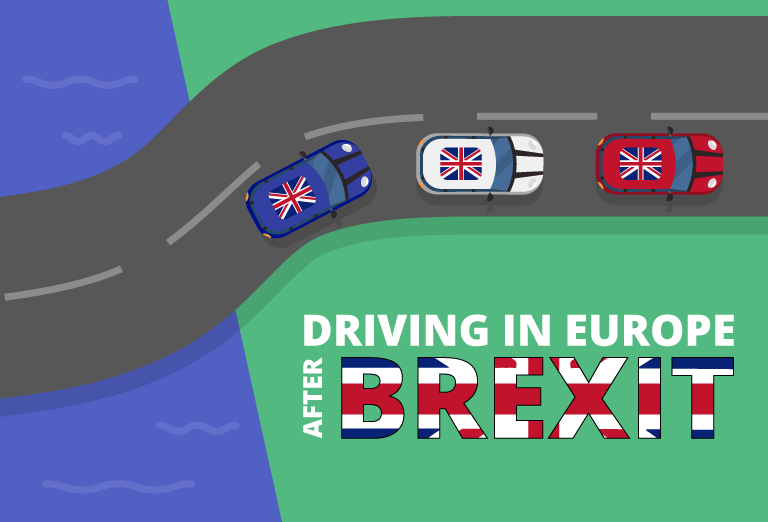Driving in Europe after Brexit

Dangerous territory, this Brexit stuff, but we’re dedicated to helping drivers and are determined to bring you the vital information regarding driving in Europe after 29 March 2019.
The content of this post is based on the technical notice(s) released by the UK government (via gov.uk) with special attention paid to a ‘no deal’ scenario. There are lots of suggestions and conjecture out there, but we want to stick to the official guidance – no Project Fear here (whichever way you voted).
1. Permits
Currently, your UK driving licence permits you to drive abroad without any additional paperwork. In the event of a no deal, UK drivers will need an international driving permit (IDP) to drive in the EU and European Economic Area (EEA).
Each country in the EU and EEA can set its own rules regarding foreign drivers, so not every country will have the same rules. This means that, if you drive through more than one EU or EEA country, you may need more than one IDP.
One exception is that driving in the Republic of Ireland will not be affected.
For a full list of countries requiring IDPs, details of the different IDPs, and information on how to purchase them, visit this page on the gov.uk website.
2. If you live in an EU country
It is recommended that you exchange your UK driving licence for a local EU driving licence before March 29th. In the event of a no deal scenario, you may have to pass a driving test in your country of residence to continue driving there legally.
3. Number plates
Your current number plate should display either a GB identifier or a ‘Euro-plate’ – with both the EU flag and a GB sign.
In the event of a no deal exit, you may need to add a GB sticker to your vehicle to drive in the EU or EEA – even if you already have Euro-plate.
You will not need a GB sticker to drive outside the UK if you replace a Euro-plate with a plate that only has a GB identifier. However, this will cost considerably more than a sticker.
4. Insurance – proof
Your insurance will remain valid abroad whatever the situation after 29 March, but there could be some changes to how it works.
That being said, in the event of a no deal exit and no intervention from the European Commission on the matter, UK drivers will need to carry a motor insurance Green Card when driving in the EU and EEA.
A motor insurance Green Card can be obtained from your vehicle insurance provider and acts as evidence of your motor insurance cover when driving abroad.
5. Insurance – claims
In the event of a no deal exit, UK residents involved in road traffic collisions abroad should not expect to be able to make a claim via a UK-based Claims Representative or the UK Motor Insurers’ Bureau.
Instead, you may need to bring a claim against the driver or insurer in the country in which the collision occurred. This could involve bringing the claim in the local language.
In the event of a no deal scenario, if you are involved in a collision with an uninsured driver in an EU or EEA country, you may not receive compensation.
If you have been or are involved in an accident in an EU or EEA country before March 29 2019, you should consider proceeding with legal action in the UK before that date. If you do not, you may have to bring legal proceedings against the responsible driver or insurer in the EU or EEA country instead.
And there you have it – a quick(…) summary of the government’s technical notices on driving in the EU and EEA after Brexit.
At the time of writing, no deal has been agreed between the UK government and the European Union. Things could change between now and March 29, but it never hurts to be prepared. Keep an eye on our site in the future for future updates on how Brexit could affect driving in the EU.
If you’re a professional driver and want to know how Brexit may affect your work, we’ve also compiled a list of specialised advice for goods vehicle drivers. Click here to read our Brexit advice for professional drivers.
